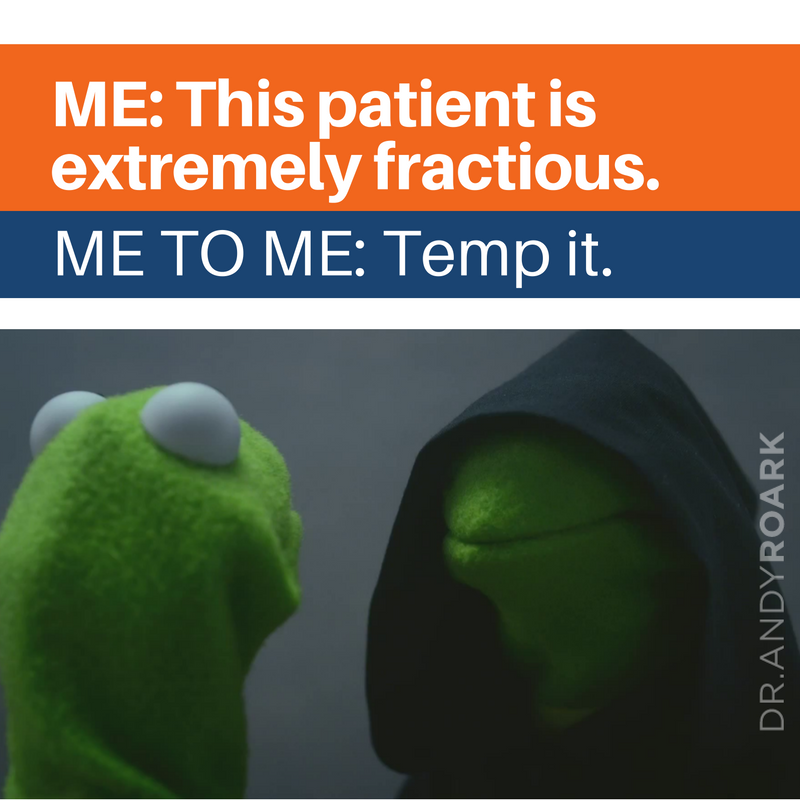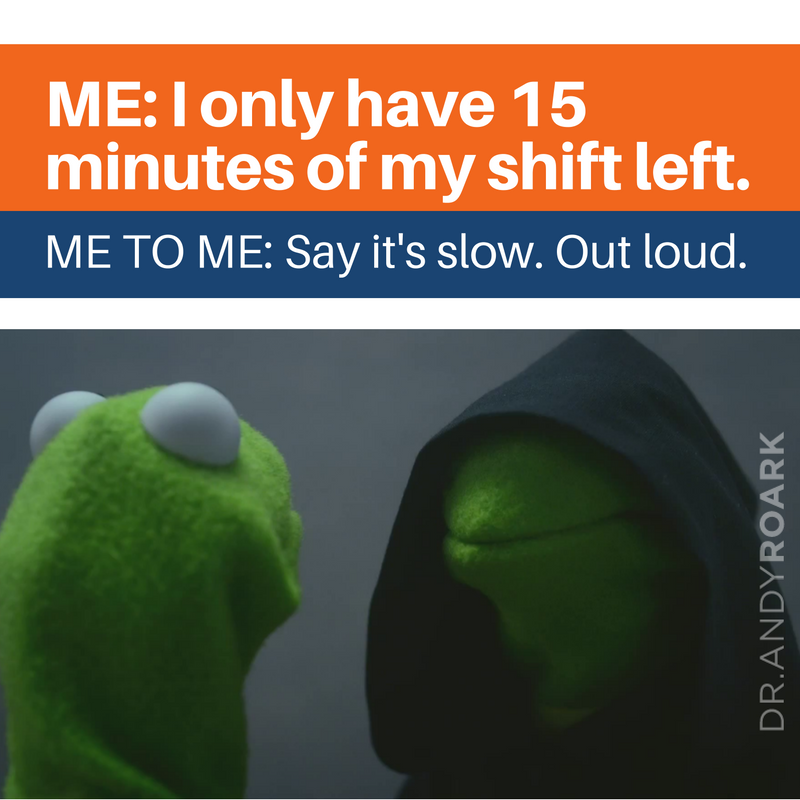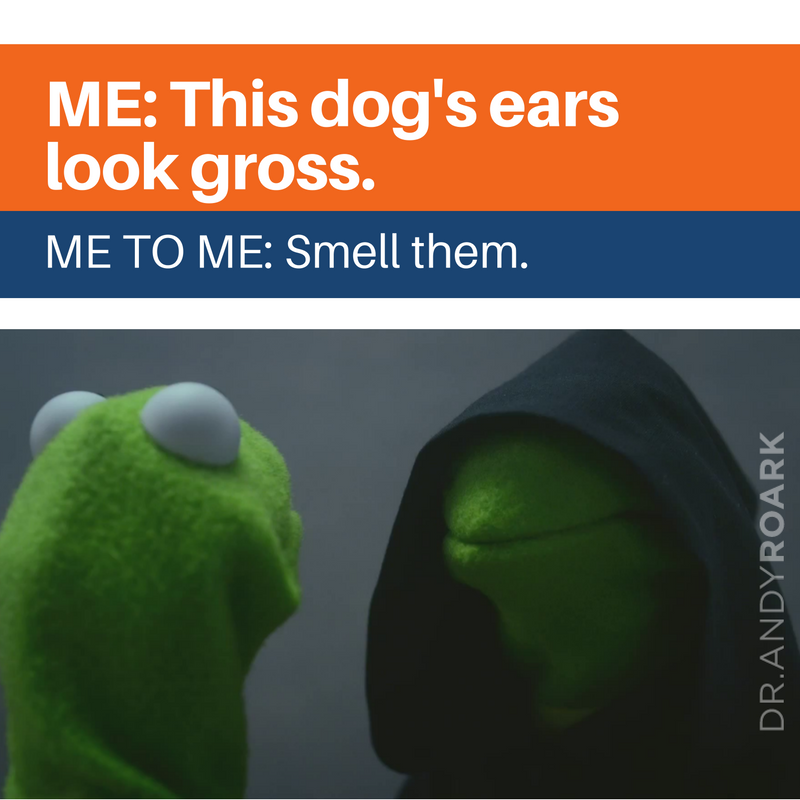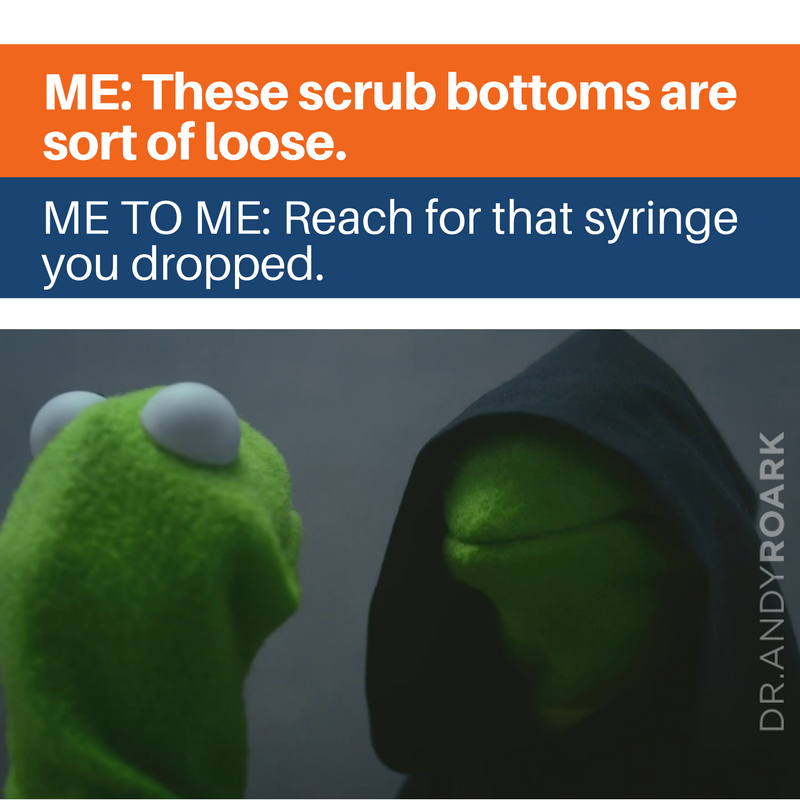Dogs need exercise, but it’s not always easy to get outdoors. Whether the weather is bad, you’re stuck in a 5th floor walkup, or you just don’t have time to get away, Dr. Andy Roark has five tips will help keep your dog active, even when you can’t get out to the park.
6 Awkward Phone Moments Only Veterinary Professionals Will Get
Talking perfectly on the phone at work? Not realistic. Here are a few veterinary professionals that were willing to admit the blunders and – sometimes literal – hiccups they’ve experienced on the @DrAndyRoark Instagram.
1. When pets have human names…
Me: “Hi this is Tiarah calling from Alta Vista Animal Hospital. Is Chelsea available?”
Client: “Um yeah, but she can’t speak to you… because she’s our DOG.”
2. Oops. Who was I calling?
“Hello this is Dr K can I speak to Fluffy?” – @nkominek
3. The most adult of things to say.
I finished my conversation with the owner over the phone.. he said thanks for the help and I replied with “You’re welcome, night night.” 😑 – @xhollyleex
4. It’s natural.
I was leaving a message to see how “Fluffy” was doing. Mid-sentence I hiccup so loudly. Awesome. – @bvpeet
5. We all need support.
“Dunbar Animal Hospital. How may I hold you?” – @cait_lett_12
6. Some of us more than others…
I answered the phone one day and said, “This is Liz, how can you help me?” -@lizgannon11
Have you said something awkward?
Tell us in the comments below, and be sure to follow the @DrAndyRoark Instagram for your chance to be future on a future blog.
You MUST SEE This Hilarious Animal Shelter Commercial
Just thinking about the song “Angel” by Sarah McLachlan can make most pet lovers eyes fill with tears. Instead of going that route to promote the importance of adopting pets, Atlanta’s Furkids Animal Rescue and Shelters tried something a little less expected.
The results are hilarious.
Stop! Read This Before Bandaging Your Pet’s Wounds
Did your dog or cat manage to get a cut? Your first inclination might be to put a bandage on it. In this episode of Cone of Shame, Dr. Andy Roark explains why that’s not always the answer.
1. Wounds can become worse than they initially seem.
2. Not all wounds are the same.
Check with your veterinarian.
Always consult with your trusted veterinarian if your pet gets injured. Watch the full episode of Cone of Shame below to learn more about keeping your furry friend safe & healthy.
5 Evil Kermit Memes Only Veterinary Professionals Will Get
You didn’t know it, but Evil Kermit has a little bit of veterinary hospital experience.
1. Sounds risky, but…

2. Or try the”Q” word…

3. So gratifying…

4. You know you’d do it…

5. The real struggle…

Special shoutout to Kelsey Beth Carpenter, RVT for her help on these! Follow her on Instagram and Facebook for more of her hilarious Things Heard at An Animal Hospital memes and epic original songs!
This Is How Your Cat’s Eyes See The World
Can cats see colors? In this episode of Cone of Shame, Dr. Andy Roark addresses some fun facts about cats’ vision.
1. Cats don’t see red or green.
2. Cats focus on brightness, pattern, shape, and size.
Want more cat fun facts?
Watch this full episode of Cone of Shame below, and be sure to subscribe on YouTube!